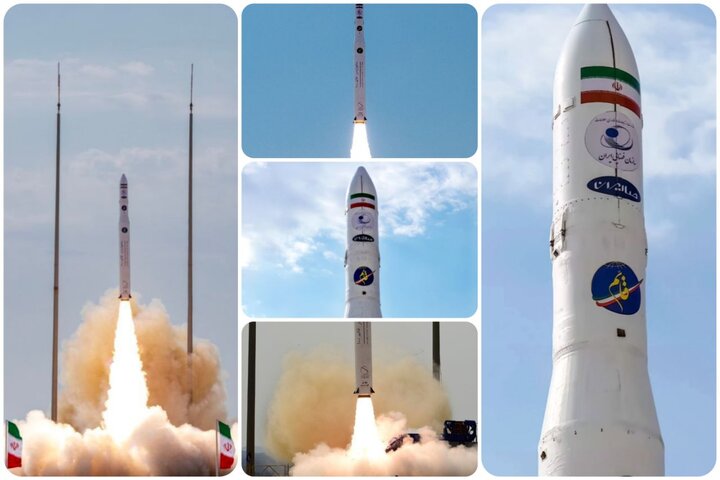Orbital Rendezvous of Chamran-1 Satellite with Qaim-100 Launcher Body

Forty days after the launch of the Chamran-1 satellite into space, and after confirming the correct functioning of its subsystems, the mission for an orbital rendezvous with the Qaim-100 launcher body was undertaken.
According to Mehr News Agency, after confirming the operational integrity of the Chamran-1 satellite’s subsystems and successfully performing maneuvers to adjust altitude, phase, and orbital inclination, the orbital rendezvous mission with the Qaim-100 launcher’s body, serving as the target system, was planned and executed successfully.
The orbital rendezvous mission is generally considered a preliminary step toward docking space systems in orbit, which requires a combination of complex maneuvers. Following stabilization of the satellite in orbit after launch, Chamran-1 was initially positioned with a height difference of approximately 3 kilometers and a phase difference of 1 degree (equivalent to 120 kilometers) relative to the launcher body. In subsequent steps, after assessing the satellite’s subsystems, the maneuvers for adjusting inclination, phase, and altitude were executed correctly, resulting in significant changes to the satellite’s position relative to the launcher body, bringing about a phase difference of approximately 180 degrees and a height difference of about 12 kilometers.
To carry out the orbital rendezvous mission, combined maneuvers were scheduled, including simultaneous adjustments in inclination, phase, and altitude. These combined maneuvers were also successfully executed, aligning the satellite’s altitude with that of the Qaim-100 launcher body and reducing the phase difference to less than one degree.
Finally, with additional precise maneuvers, the satellite successfully achieved an orbital rendezvous on Friday, November 1st, with a phase difference of less than 0.05 degrees, equivalent to an approximate distance of 4.5 kilometers from the target.
Safety considerations were meticulously observed in designing and executing these orbital maneuvers to prevent any possible collision in space.
Given the successful performance of the satellite in the orbital rendezvous mission, an initial evaluation has confirmed the feasibility of docking space systems in orbit. After the completion of this rendezvous, Chamran-1 will once again serve as a research platform for space researchers, with its capabilities allowing it to perform additional rendezvous missions with similar space targets with even greater precision.





